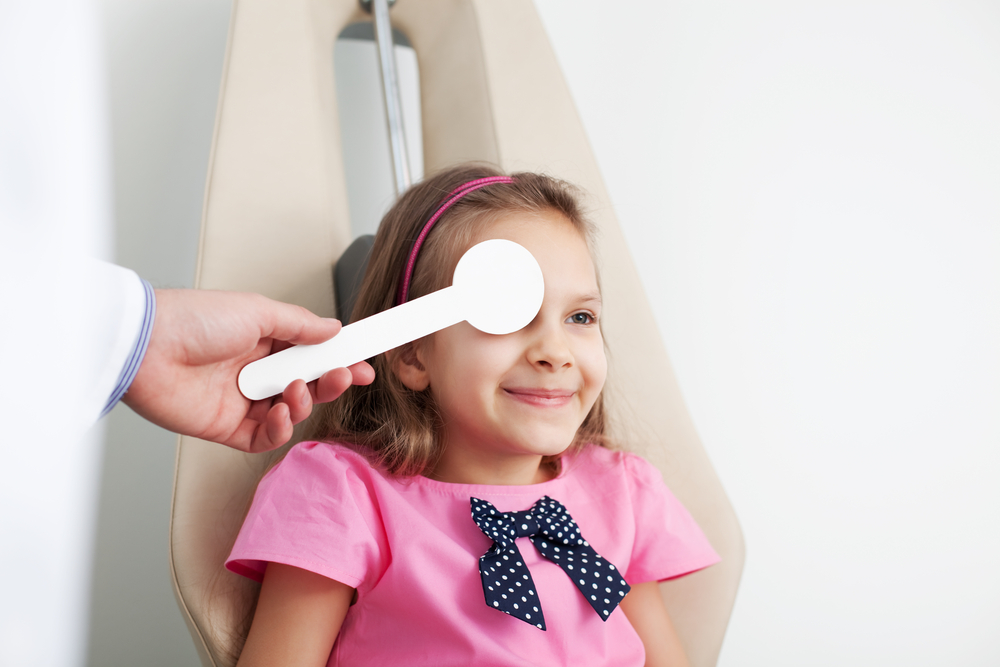The first step in proper pediatric eye care is early detection. Children may not realize they have a vision problem or may not be able to communicate it effectively. This is why routine eye exams are crucial from an early age.
Early detection of vision problems in children can prevent them from developing into more serious conditions. For example, conditions such as strabismus (crossed eyes) and amblyopia (lazy eye) can often be corrected if detected and treated early. If left untreated, these conditions can lead to permanent vision loss in one or both eyes.
Early detection can also have a significant impact on a child's academic performance. Children with undetected vision problems often struggle in school because so much of learning is visual. By correcting vision problems early, we can give our children the best chance of success in school and beyond.
Common Vision Problems in Children
There are several common vision problems that can affect children. These include refractive errors such as myopia (nearsightedness), hyperopia (farsightedness), and astigmatism, which can cause blurred vision. Strabismus and amblyopia, mentioned earlier, are also common, as well as conditions like pediatric cataracts and glaucoma.
Myopia and hyperopia are usually corrected with glasses or contact lenses. Strabismus and amblyopia, however, require more specialized treatment, which we'll discuss in a later section. Pediatric cataracts and glaucoma are less common, but they can be serious and require surgical intervention.
Understanding these common vision problems in children is an important part of pediatric eye care. By knowing what to look for, parents and caregivers can help ensure that any issues are detected and treated as early as possible.
Treatment Options for Vision Problems in Children
When it comes to treating vision problems in children, there are various options available, depending on the specific condition and its severity. For refractive errors like myopia and hyperopia, prescription glasses or contact lenses are usually the preferred treatment.
In cases of strabismus and amblyopia, treatment options can include glasses, patching therapy, vision therapy, or even surgery in some cases. Patching therapy involves covering the stronger eye to force the weaker one to work harder, thereby improving its function. Vision therapy is a kind of physical therapy for the eyes and brain, designed to correct vision problems and improve visual skills.
For serious conditions like pediatric cataracts or glaucoma, surgical intervention may be necessary. The specific procedure will depend on the condition and the child's overall health.
The Benefits of Early Treatment of Vision Problems in Children
Firstly, treating vision problems early can prevent them from worsening and causing more serious issues. For example, untreated strabismus can lead to amblyopia, and untreated amblyopia can result in permanent vision loss.
Secondly, early treatment can significantly improve a child's quality of life. Correcting vision problems can enhance a child's performance in school, boost their confidence, and enable them to engage in activities they enjoy.
Finally, early treatment can also reduce the overall cost of eye care. By catching and treating vision problems early, we can often avoid more complex and expensive treatments down the line.
Preventative Measures and Tips for Maintaining Children's Eye Health
The best way to deal with vision problems in children is to prevent them in the first place. There are several preventative measures and tips that can help maintain your child's eye health.
Ensure your child has regular eye exams. As mentioned earlier, these should start at six months of age. Regular exams not only help detect any vision problems early but also ensure your child's eyes are developing normally.
Provide your child with a balanced diet rich in fruits and vegetables. Certain nutrients, like vitamins A, C, and E, are essential for eye health.
Limit screen time and encourage outdoor play. Spending too much time on digital devices can strain the eyes and contribute to myopia. On the other hand, outdoor play can help prevent the development of myopia and promote overall eye health.
Lastly, ensure your child wears protective eyewear during sports or recreational activities to prevent eye injuries.
When to Seek Professional Pediatric Eye Care
While regular eye exams are essential, it's also important to know when to seek professional pediatric eye care outside of these routine visits. If your child complains of frequent headaches, squints, holds books or devices too close to their face, has trouble reading, or shows any other signs of vision problems, it's time to consult a pediatric eye care professional.
Conclusion
Pediatric eye care is an integral part of your child's overall health and wellbeing. It plays a crucial role in the early detection and treatment of vision problems, helping to ensure your child's academic success and quality of life. As parents, we must prioritize our child's eye health, from arranging regular eye exams to encouraging healthy habits that promote good vision. With the right knowledge and proactive approach, we can help our children see the world clearly and brightly.
For more information on early detection and treatment options for vision problems in children, visit Grove Eye Care at our office in Richmond or Midlothian, Virginia. Call (804) 353-3937 or (804) 888-8998 to discuss any questions about pediatric eye care or to schedule an appointment today.










